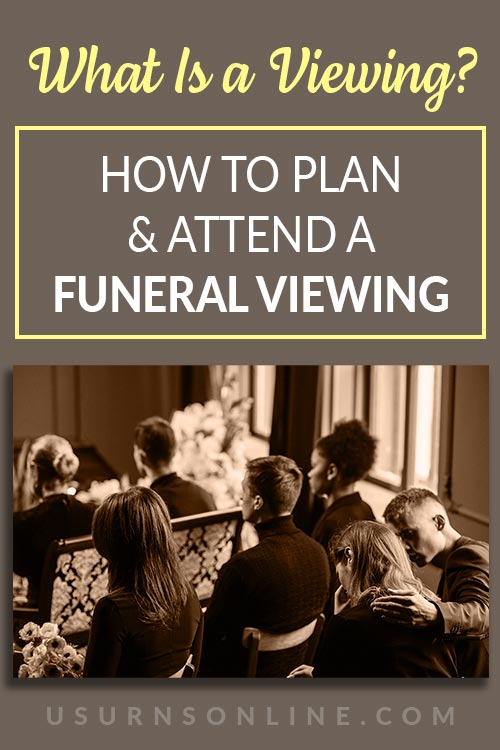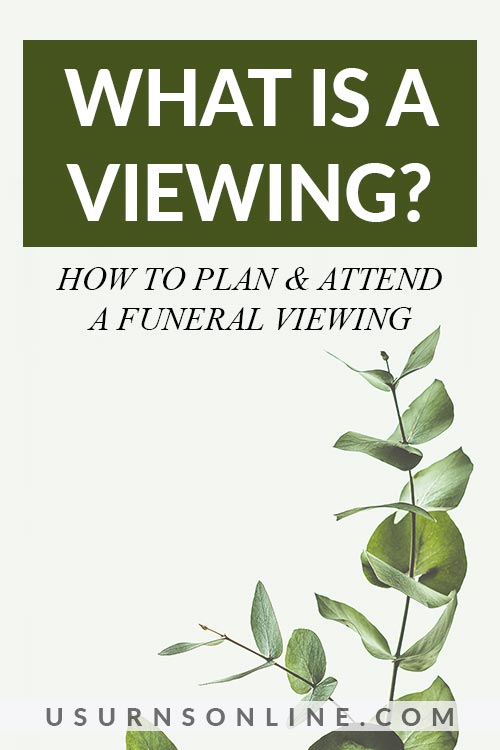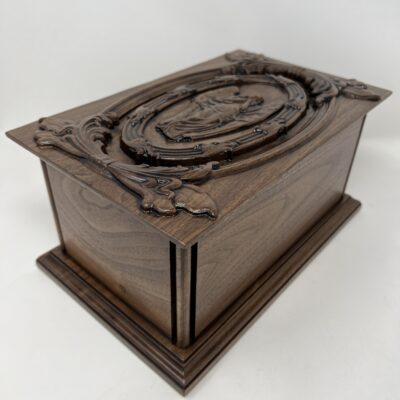What is a funeral viewing? And how does it compare to a wake, or the actual funeral itself? At its most basic, the viewing allows family members one more chance to see – and say goodbye – to a departed loved one.
There is general etiquette to follow when attending a viewing. For example, how long should you stay? How should you dress? Should you bring the family a gift or token of some sort?
There is also etiquette that goes into planning a viewing. There are many important decisions to make, and even more options to help you do so, but the main thing to remember is that it’s a time for the family to pay respects and support one another.
We have put together everything you need to know right here. Jump to:
Once you’ve finished reading, you will know the answers!
Funeral vs. Viewing vs. Wake
Funerals, viewings, and wakes are all related opportunities for visitors to show support and express condolences to the bereaved family. That said, viewings and wakes are less formal gatherings than a funeral, and often include food and drinks. Attendees are welcome to come and go, mill about, and catch up with old friends and distant relatives.
Compared to the timely order of a funeral, a viewing or wake usually lasts for a few hours, though sometimes it can be spread out over a couple of days.
Let’s now take a look at the main difference between the funeral, and the viewing or wake.
Funeral
The funeral ceremony, sometimes described as a memorial service or celebration of life, is the formal last goodbye to the deceased loved one.
During a funeral, there is often an order of service to adhere to, which may include hymns, a sermon, and a eulogy. The casket may be open or closed, or the urn displayed, depending on the wishes of the family.
Urns Made in the USA
Interment or inurnment may immediately follow the funeral, but not always.
Viewing
A funeral viewing is a comparatively informal event, where family gathers and visitors pay their last respects to the decedent.
The viewing often occurs the evening before, or sometimes even a few hours before, the funeral. The casket is usually open, allowing visitors to view the body if they wish (hence the name), and the family is usually present to speak with those who have come to pay their respects.
We go over more about what happens at viewings down below.
Wake
By definition, the funeral wake is more of a religious service.
A Catholic wake is similar to a viewing, but may also include a priest offering a formal prayer (such as the Rosary) at a set time, once visitation has concluded. Again, in general, many people use the terms “wake,” “visitation,” and “viewing” interchangeably, but it’s important to note that they all differ from the funeral.
A wake provides a good opportunity for a pastor or other celebrant to speak a few words.
So if you are in the planning stages for one of these services, you will need to decide if you want a speaker. It need not be formal; a brief message of hope and a prayer, or some good-old-fashioned “raise a glass” funeral toasts would suffice.
But again, this is totally up to you.
What Happens at a Viewing?
Since you are wondering what to expect at a viewing, it is helpful to know that viewings usually have a set of rules and protocols to follow. Although not as strict or formal as a funeral, there are still standards to adhere to.
The viewing is a way to spend time with the body, as in “viewing” the body, as well as with the family of the decedent before the funeral service.
When and Where Does a Viewing Take Place?
The viewing takes place before the funeral. Sometimes it is held the day before, and sometimes on the same day as the funeral.
The body of the deceased is embalmed and prepared for presentation before a public viewing takes place.
Typically the viewing takes place at a funeral home. The funeral director and staff will provide rooms set up for just this purpose. A viewing can also take place at the family’s home or another location, such as a church, though that is less common.
Will the Body Be There, and Will the Casket Be Open?
Yes, the body will most likely be there, and yes, the casket is often open. You will not be required to actually get close and “view” the body if you do not want to, although you are certainly welcome to.
With no body present, or for a closed-casket service, this type of gathering is often called a visitation.
However, the terms can be used somewhat loosely. You may be invited to a “viewing” and find a closed casket, a cremation urn, or no casket/urn at all.
How Long Does a Viewing Last?
Most modern wakes and viewings last at least a couple of hours, but there is no requirement on how long you should stay. Viewings are usually come-and-go invitations.
That means you can arrive any time during the posted visiting hours. (Take it from a former funeral home employee…please don’t stay past the posted hours!) You only need to stay as long as it takes to offer your condolences to the deceased’s family.
You can do this in a short time, usually 15 to 20 minutes. However, if you are close to the family, you may decide to stay longer.
Funeral Viewing Etiquette
If you are still feeling a little uncertain about attending a viewing for a loved one, here is a little brush-up on funeral etiquette, as it pertains to viewings.
What to Do at a Viewing
- Offer condolences to the family. Sign the guest book if there is one.
- View the body, or don’t. You are under no obligation to “look.”
- If you view the body, don’t linger at the casket. Say your farewells and move on.
- Don’t be loud. Talk in a respectful tone of voice.
If you are not sure what to say at a viewing, sharing fond memories and expressing support are good topics to stick to when talking with the family of the deceased.
What to Bring
You can bring flowers, a plant, a sympathy gift, or even a donation. But none of those, as mentioned, is mandatory.
The family will appreciate your presence and support more than anything else.
What to Wear
It is common practice to wear dark, formal attire; it reflects the mourning atmosphere of the service. Men will generally wear dress pants and dress shirts. Women typically wear pants or a skirt and blouse.
Dress respectfully. No ripped jeans, no cleavage, or short skirts. The point is to avoid calling attention to yourself through whatever clothing you choose.
Again, this is about showing respect to the family and close friends of the deceased. Don’t try to make a fashion statement.
As you can see, there is more than one key difference between a viewing, a wake, and a funeral. The most important thing to remember, however, is that each of these services exists to honor the deceased, and to offer support and condolences to the family in mourning.
Read Next: Funeral Flower Etiquette





